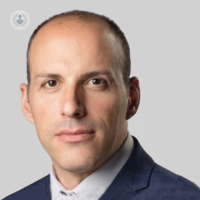Coronary disease: causes, symptoms and treatments
Escrito por:Coronary heart disease is a condition in which plaque is deposited within the coronary arteries. These arteries supply oxygen-rich blood to the heart muscles.

Causes of coronary heart disease
The most common cause of coronary heart disease is atherosclerosis, which is when plaque builds up inside the coronary arteries. Plaque is formed by cholesterol, various fatty substances, calcium and fibrin, which is a pro-coagulant. There are two types of plaque: hard plaque and soft plaque.
- Hard plaque usually grows progressively and eventually creates an imbalance and / or interruption in the blood flow to the heart, causing what is called angina pectoris and / or a myocardial infarction (heart attack).
- Soft plaque is caused by an inflammation that activates the coagulation process and can completely obstruct the coronary artery causing a sudden acute myocardial infarction.
Some of the factors that increase your chances of having heart disease are:
• high cholesterol levels
• diabetes
• a diet high in saturated fat
• being overweight
• a sedentary lifestyle
• too much stress
• smoking
• have close relatives with heart disease at an early age
Symptoms of coronary heart disease
You may not know you have coronary heart disease until you begin to have symptoms of artery blockage. Chest pain (angina) and shortness of breath are often the first signs. Some people do not know they have coronary heart disease until they have a heart attack.
If you have several of the risk factors you should talk to your doctor or a cardiologist even if you do not have symptoms. There are some steps you can take to decrease your risk of coronary heart disease and improve the health of your heart and blood vessels.
A person can suffer from coronary heart disease for many years without presenting symptoms. This slow process of disease can begin in childhood. In some people, the disease can cause symptoms between 30 and 40 years of age, while others do not show symptoms until after the age of 50 or 60. But as the degree of obstruction increases, the lower blood flow to the heart can begin to cause what is called angina pectoris.
Some patients with coronary heart disease may not experience symptoms of angina pectoris. Sometimes the poor supply of oxygen to the heart (called ischemia) does not cause any pain. This is called silent ischemia.
Another manifestation of coronary heart disease is a myocardial infarction (heart attack), which is caused by a total blockage of the coronary artery. Coronary artery blockage prevents blood that is rich in oxygen and nutrients from reaching a section of the heart. If the blood cannot reach the heart muscle, it will die. If treatment is obtained immediately, damage can be reduced, but if a section of the heart muscle dies, the damage is irreversible.
Treatments for coronary heart disease
1. Medications: Several medications help relieve the pain of angina caused by coronary heart disease. People who suffer from severe angina often receive several different medications. Antiplatelet drugs such as aspirin may also be given to patients suffering from angina, as these medicines decrease the chance of blood clots forming in places with obstructions.
• A drug called glyceryl trinitrate can widen or dilate arteries and thus improve blood flow to the heart.
• Beta blockers "block" the chemical messages that the heart receives that could make it work harder.
• Calcium blockers help keep arteries open and lower blood pressure by relaxing the smooth muscle that surrounds the arteries of the body.
2. Percutaneous surgery: Angioplasty opens the narrowed arteries. It is a procedure performed by cardiologists using a long thin tube called a catheter that carries a small balloon at the tip, which inflates at the site of the obstruction in the artery to compress the plaque against the arterial wall. Angioplasty is also called percutaneous transluminal coronary angioplasty (PTCA).
Balloon angioplasty is complemented by placement of a stent. The stent is a metal mesh of tubular shape that is implanted in the area of the artery obstructed by plaque. Current stents are coated with medications that reduce the chance of the artery closing again. These are called drug-eluting stents.
Rotational atherectomy may be another option for those patients where balloon angioplasty is not effective as a result of the hardness of the plaque. A small device – called a rotating burr - with a diamond crystal head attached to a catheter operates at between 160,000 and 190,000 revolutions per minute to cut the hard plaque to enable the stent implantation.


